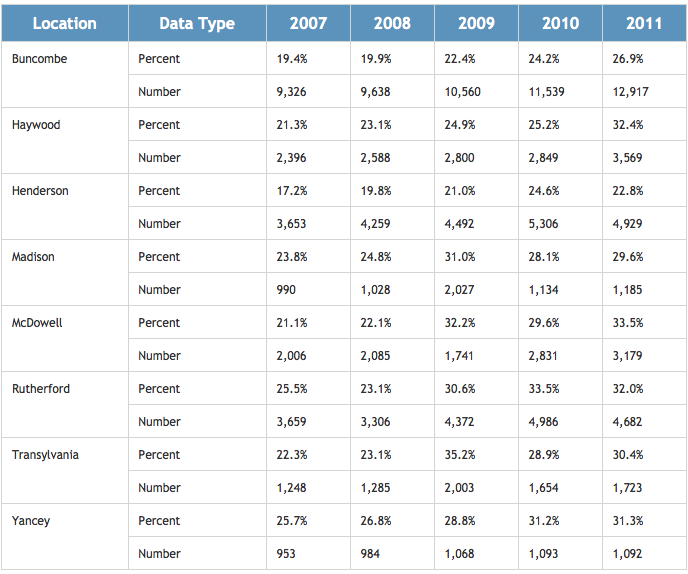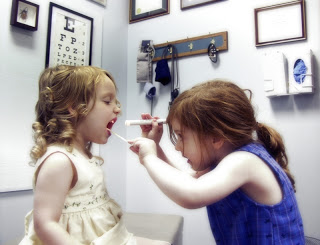A report released today, Monday June 24, reveals that North Carolina still lags behind the nation in economic well-being despite making gains in education and child health in recent years.
According to findings from the 2013 KIDS COUNT Data Book, a project of the Annie E. Casey Foundation, 26 percent of children statewide (or 580,000 children) lived in poverty in 2011 — a five percent increase since 2005. In Buncombe County, nearly 27 percent of children lived in poverty in 2011, faring better percentage-wise than most of its neighboring counties: 34.4 percent in Haywood, 33.5 percent in McDowell, 32 percent in Rutherford, 30.4 percent in Transylvania and 31.3 percent in Yancey. However, though Buncombe’s percentage is lower than those counties, there were a greater number of children living in poverty in Buncombe. (See the chart related to poverty below)

But the report goes beyond figures related to poverty. For the last 24 years, the Annie E. Casey Foundation has published the report to track the well-being of the children, both nationally and statewide. To see how children in the Tar Heel state are doing, the report examines four categories: economic well-being, family and community, education and health. Some interesting findings from the report can be found below:
Statewide:
• In 2011, more than one in three children in North Carolina (34 percent) lived in a family that lacked full-time, year-round employment, up from 28 percent since 2008.
• In 2011, 37 percent of children were living in households with a high housing cost burden, up from 33 percent in 2005.
• The percentage remained unchanged when it came to the number of children not attending preschool. From 2005-2007 and from 2009-2011, the percentage holds steady at 57 percent.
• 66 percent of fourth graders were not proficient in reading in 2011, an improvement from 71 percent in 2005. Eighth graders in North Carolina improved in math. In 2011, 63 percent of eighth graders were not proficient in math compared to 68 percent in 2005.
• The percentage of children in single parent homes worsened. In 2011, 35 percent, or 24,718,000 children, of the state’s children, were in single-parent families. In 2005, this number was 32 percent. This follows the same changes seen nationwide.
• From 10 percent in 2008, the percentage of children without health insurance has declined to 7 percent. This follows the same changes seen nationwide.
Nationwide:
• In 2011, 32 percent of children lived in a family that lacked full-time, year-round employment, up from 27 percent in 2008.
• In 2011, 40 percent of children were living in households with a high housing cost burden, up from 37 percent in 2005.
• The percentage improved slightly nationwide when it came to the number of children not attending preschool. From 2009-2011, 54 percent of children were not attending preschool, an improvement from 56 percent in 2005-2007.
• 68 percent of fourth graders were not proficient in reading in 2011, an improvement from 70 percent in 2005. Eighth graders improved in math. In 2011, 66 percent of eighth graders were not proficient in math compared to 72 percent in 2005.
• The percentage of children in single parent homes worsened. In 2011, 35 percent were in single-parent families. In 2005, this number was 32 percent.
• From 10 percent in 2008, the percentage of children without health insurance has declined to 7 percent.
To see the entire 2013 KIDS COUNT Data Book for North Carolina, click here.
Caitlin Byrd can be reached at cbyrd@mountainx.com or 251-1333, ext. 140.




But we have so much hand crafted beer and tapas restaurants- who needs health care?